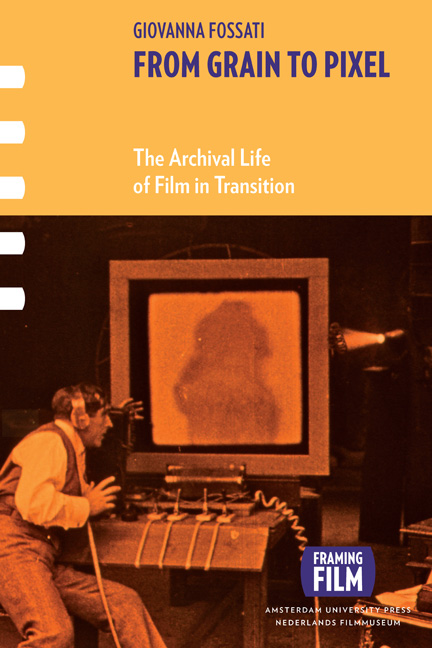Book contents
- Frontmatter
- Deduction
- Contents
- Acknowledgements
- Framing Film (in Transition): an Introduction
- Practice and Theory of (Archival) Film
- Theorizing (Archival) Practice
- A New Mindset for (Archival) Film in Transition: a Conclusion
- Notes
- Glossary Of Technical Terms
- List of Illustrations
- Filmography
- Bibliography
- Index
Chapter Four - Restoration Case Studies: Theorizing Archival Practice
Published online by Cambridge University Press: 16 February 2021
- Frontmatter
- Deduction
- Contents
- Acknowledgements
- Framing Film (in Transition): an Introduction
- Practice and Theory of (Archival) Film
- Theorizing (Archival) Practice
- A New Mindset for (Archival) Film in Transition: a Conclusion
- Notes
- Glossary Of Technical Terms
- List of Illustrations
- Filmography
- Bibliography
- Index
Summary
In the previous chapter I associated archives and laboratories with frameworks and theoretical concepts and I pointed out how different frameworks and concepts can be retraced in their policy. It is in the everyday practice of film restoration that frameworks and concepts get mixed and combined. Film restorers are confronted with many choices, driven by both ethical questions and technicalities, and it is often difficult to interpret a restoration work from one theoretical perspective only. Furthermore, it would be artificial to do so. Indeed, to quote Bruno Latour, we should refrain from transforming film from a “factual artefact” into an “artefactual artefact” (1987: 106), a theoretically coherent concept that has lost the link with its empirical life. In the restoration of a film, theory and practice should meet eventually and result in a new artifact, ready, once again, to be (re)interpreted.
Starting from the new artifacts, resulting from restoration processes carried out in the last decade, I intend to record and interpret those variations and tensions that characterize a practice in transition from analog to digital. Once again, a practice in transition analyzed from a transitional point of view.
In this chapter, five film restoration case studies will be discussed, which are all connected to the archives and laboratories analyzed in Chapter Three and they all bear a relation with the frameworks and concepts defined in Chapter Two. These cases are spread across the first decade of digital technology used in film restoration. Although many examples of digital restoration have been realized in the 1990s, most of them were experiments carried out on short fragments of otherwise photochemically restored films. The decade 1997 to 2006 opened with the first silent film fully restored in the digital domain, The Matinee Idol, and it was closed by one of the most discussed recent digital restorations, that of Dr. Strangelove. Both projects were carried out by Sony Pictures Entertainment and both employed some of the most advanced technologies available at the time of their realization. The restoration of The Matinee Idol, in collaboration with the Academy Film Archive, was carried out by different laboratories (Cinetech for the photochemical part and Sony Pictures High Definition Center for the digital part), while Dr. Strangelove was carried out by the film laboratory Cineric.
- Type
- Chapter
- Information
- From Grain to PixelThe Archival Life of Film in Transition, pp. 211 - 254Publisher: Amsterdam University PressPrint publication year: 2018



